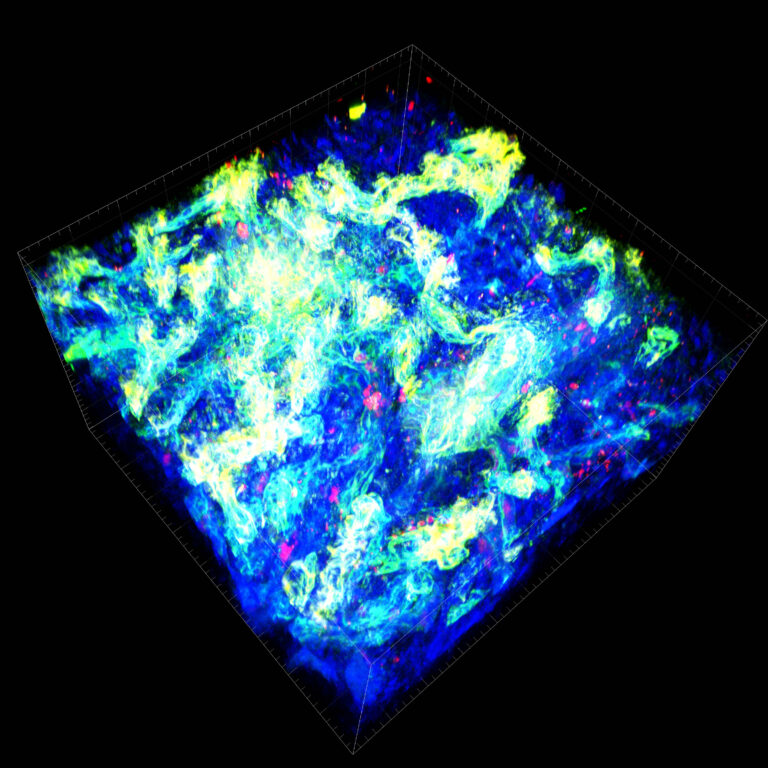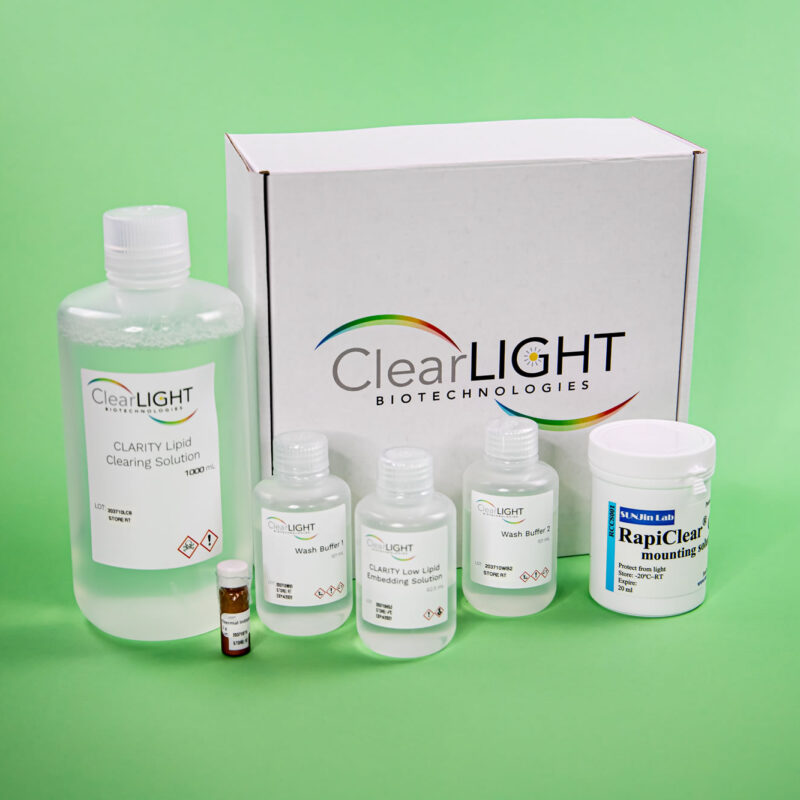Tissue Clearing Applications
Pancreas
Learn More About Tissue Clearing
- Tissue Clearing Methods Compared
- CLARITY Tissue Clearing Primer
- CLARITY Breast Cancer Study
- Moving Beyond Slices and Slides
Supporting Your Research Application
Human Pancreas
Tissue Clearing
ClearLight has applied CLARITY tissue clearing, immunohistochemistry, and Tru3D image analysis to normal and diseased human pancreata.
Human pancreas tissue clearing using the CLARITY protocol. Pancreatic ductal adenocarcinoma tumor immunostained for 3D imaging. Human PDAC: DAPI (blue), Ki67 (yellow), pan-Cytokeratin (green), CD3 (red)
Human Pancreas Tissue Clearing, Immunostaining, and 3D Imaging
A Stage IIB tumor of an invasive pancreatic ductal adenocarcinoma tumor was immunostained and imaged with DAPI, pan-cytokeratin, Ki-67, and CD3. Pan-CK identified the epithelial cells within the tumor with some Ki-67 co-localization observed in proliferating cells. A few CD3 T cells were also noted within the PDAC tumor.
Try tissue clearing on your own.
If you want to apply CLARITY to the tissues highlighted on this page, you will need to use the ClearLight LOW Lipid Tissue Clearing Kit.

Leverage our Internal R & D
When you work with us you gain the benefit of our internal experiments, assessments, and rigorous testing. In addition to performing our lab services: CLARITY Tissue Clearing, 3D IHC, and Tru3D Tissue Analysis, ClearLight scientists perform internal Research and Development to advance our understanding and applications of CLARITY to other tissue types and downstream applications. Researchers who work with us benefit from this exploratory work. The ClearLight “lab basement” is full of failed or pivoted experiments that helped inform our path to arrive at what does work. Work with us to avoid making the same mistakes that we have made or going down the blind alleys that we’ve pivoted away from.
“If you don’t want to spend the time figuring it out, we can help. We work hard to make this look easy.” - Dr. Sharla White, VP of Research and Development
Ready to Discuss Your Research Question? Meet with our Application Scientist.



